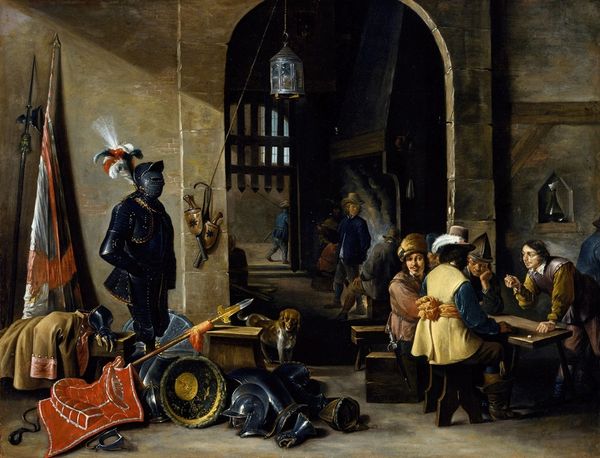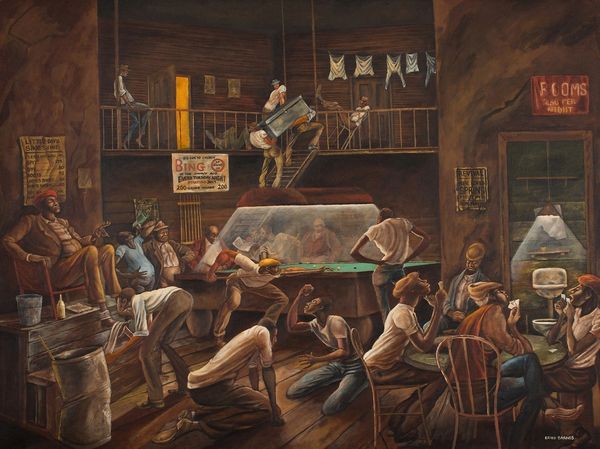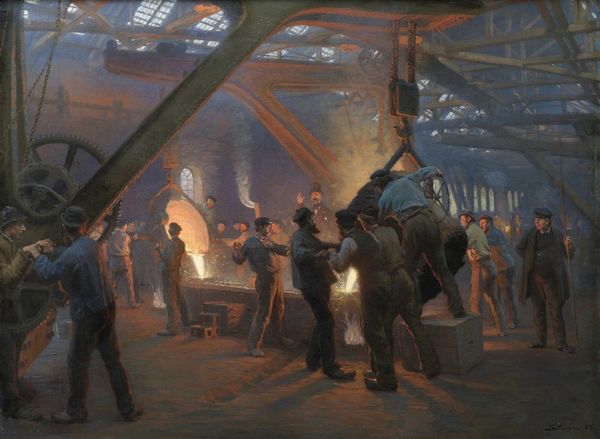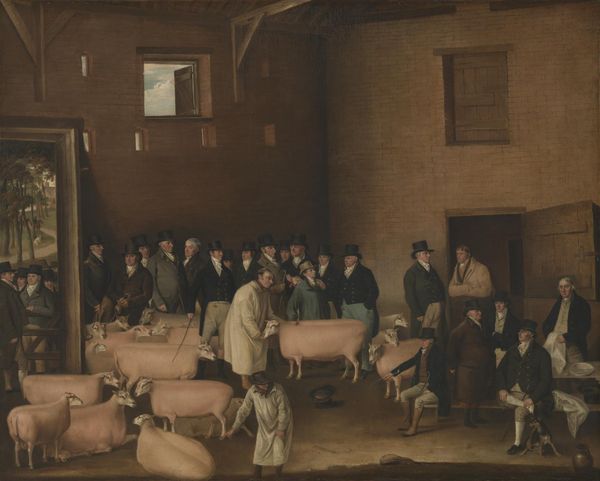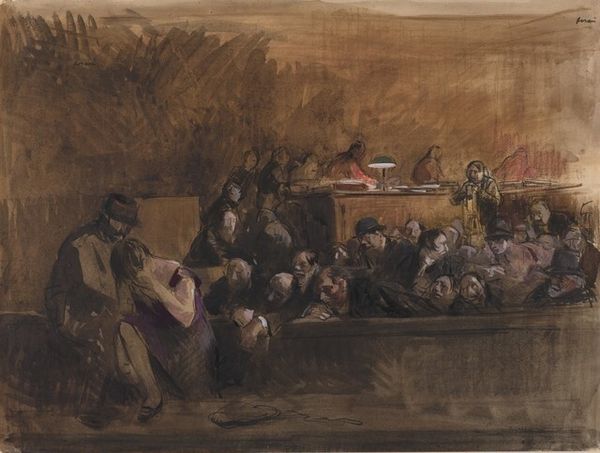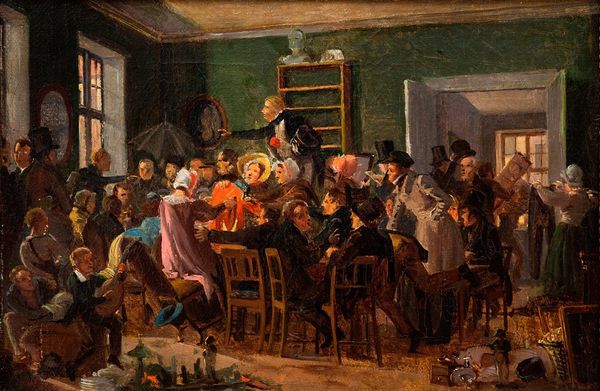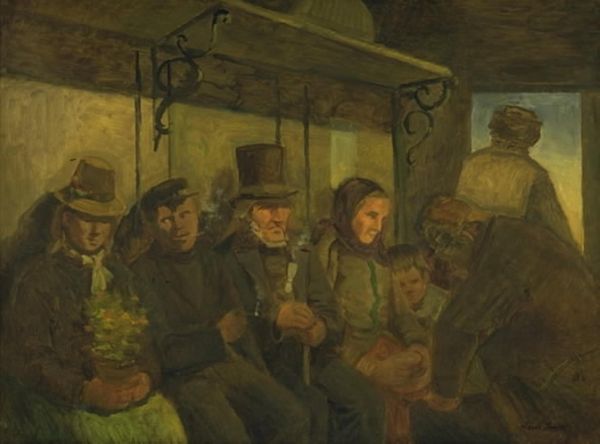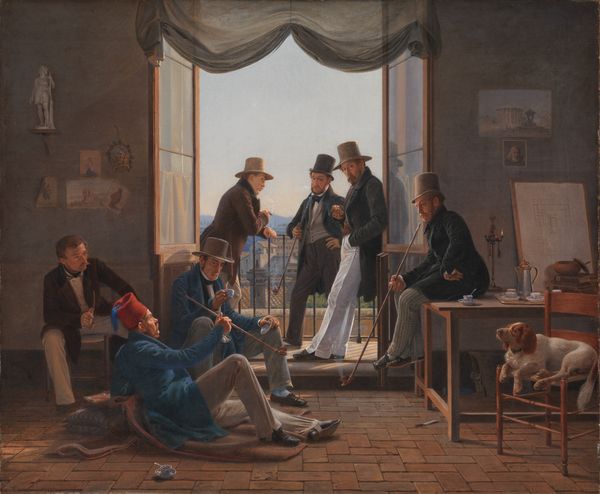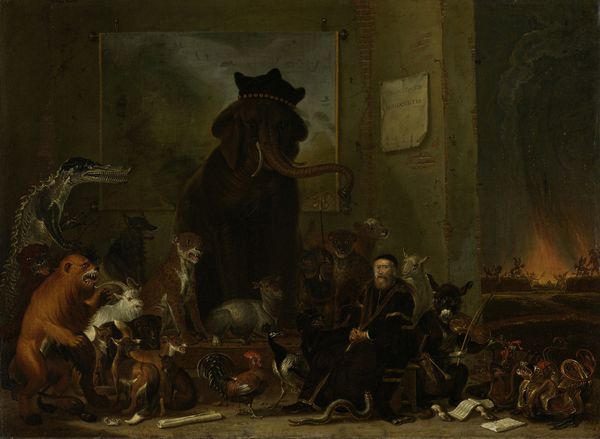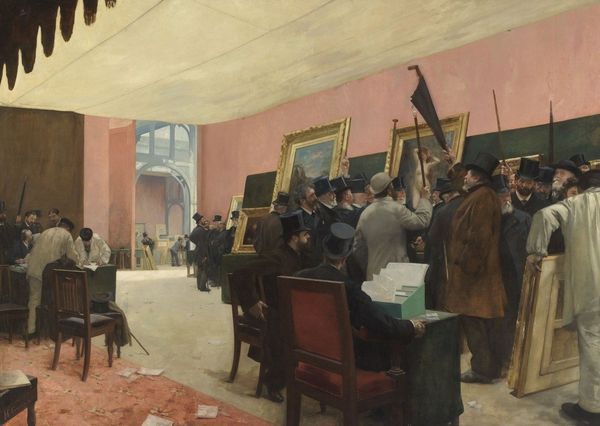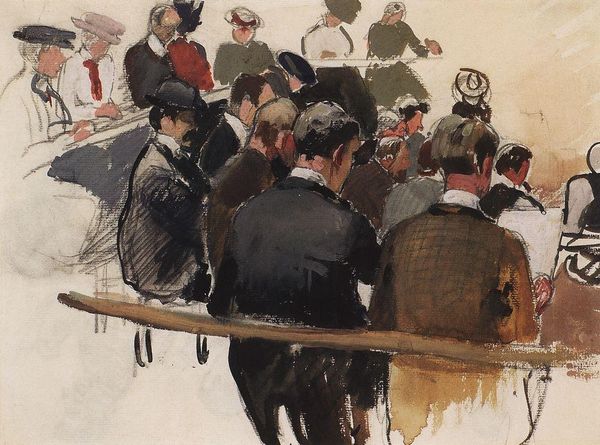
Dimensions: support: 1016 x 1270 mm
Copyright: © Tate | CC-BY-NC-ND 4.0 DEED, Photo: Tate
Curator: James Bateman’s oil on canvas, "Commotion in the Cattle Ring," held at the Tate, presents quite the scene. Editor: Indeed, it evokes a visceral sense of tension. The stark contrast between the dark, looming crowd and the arena’s sandy hue is captivating. Curator: The composition is masterfully arranged, guiding the eye from the spectators down to the central drama with the bull and handlers. The artist's perspective gives weight to the human presence within the scene. Editor: Absolutely, but I find myself drawn to the socio-economic implications. Who are these men? What does their presence signify about labor, class, and the treatment of animals in early 20th century Britain? Curator: One could also appreciate Bateman’s precise rendering of light and shadow; the way he articulates volume through subtle gradations. Editor: While that is true, I see a commentary on power dynamics, an almost voyeuristic capturing of a brutal transaction. It’s impossible to ignore the ethics at play. Curator: An insightful reading! I am struck anew by how a formal arrangement of shapes and tones can elicit such varied, relevant dialogues. Editor: Precisely, the power of art lies in its ability to provoke critical questioning and contextual understanding.
Comments
tate 7 months ago
⋮
http://www.tate.org.uk/art/artworks/bateman-commotion-in-the-cattle-ring-n04834
Join the conversation
Join millions of artists and users on Artera today and experience the ultimate creative platform.
tate 7 months ago
⋮
The son of a Lake District blacksmith, James Bateman, a badly injured veteran of the First World War, was known for his rural, agricultural and pastoral paintings. He taught at Goldsmiths College in the 1930s and first exhibited with the AIA in 1935. Bateman was a member of its Advisory Council from 1939, helping shape its response to impending conscription. A member of the New English Art Club who regularly exhibited at the Royal Academy, he was made a full Royal Academician in 1942. Gallery label, September 2024
